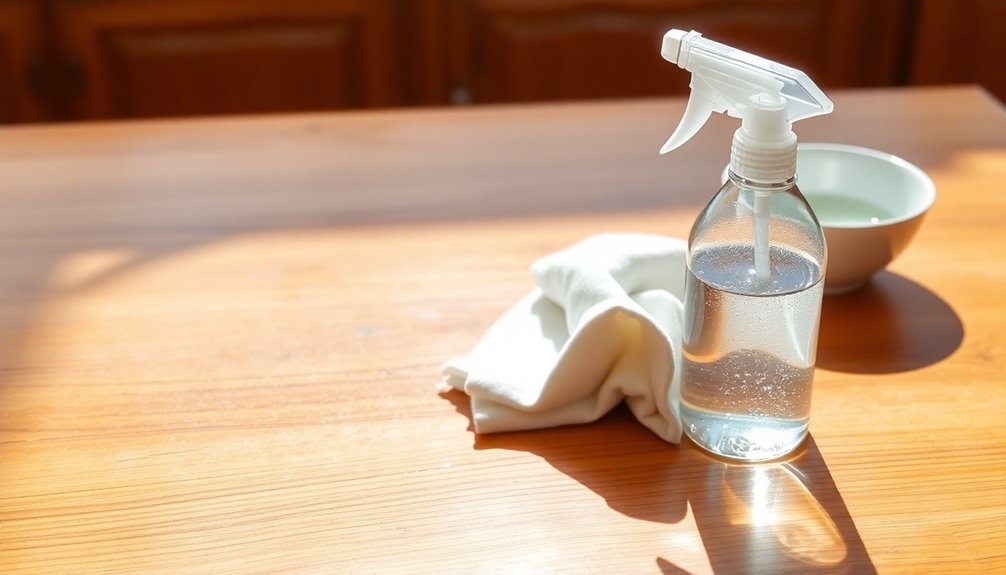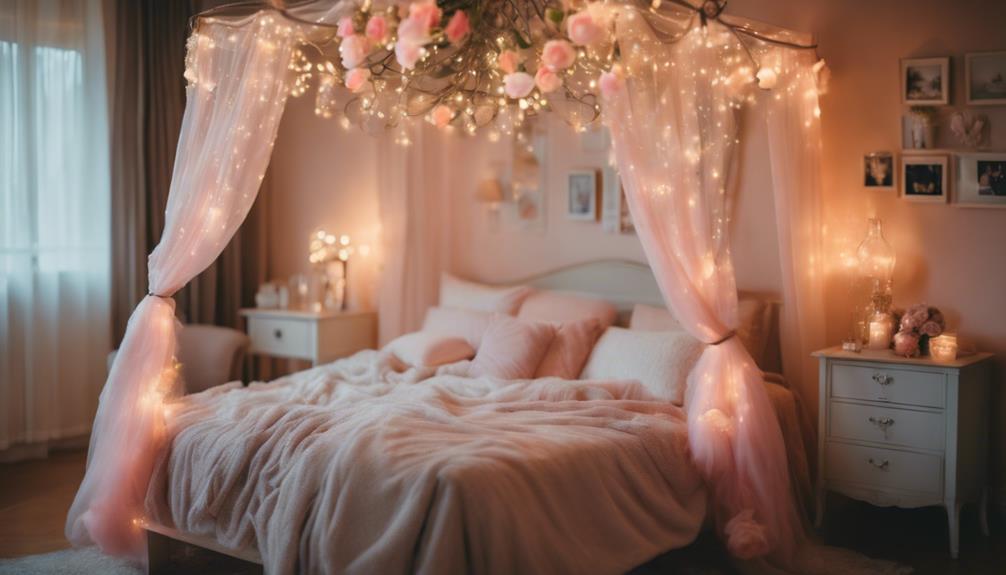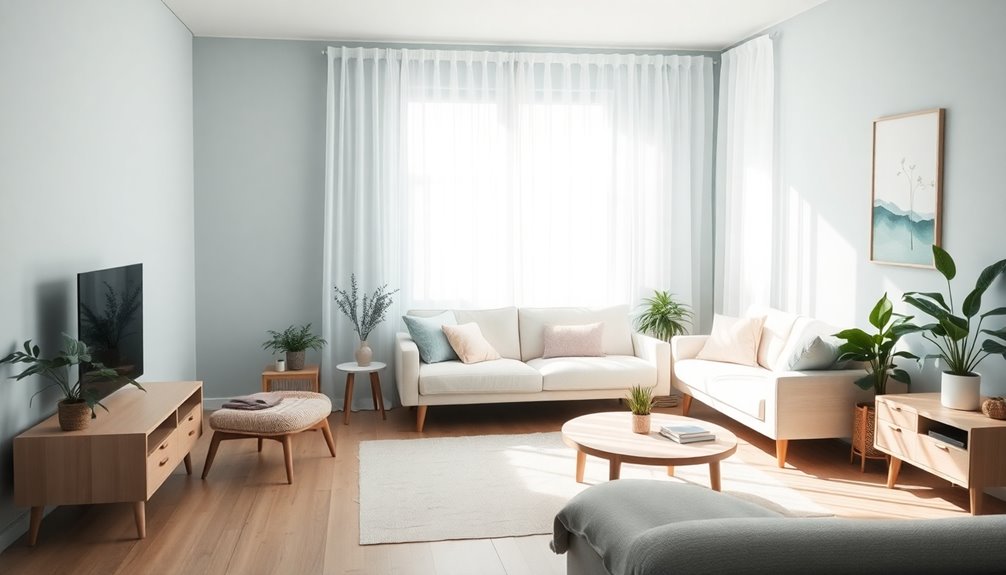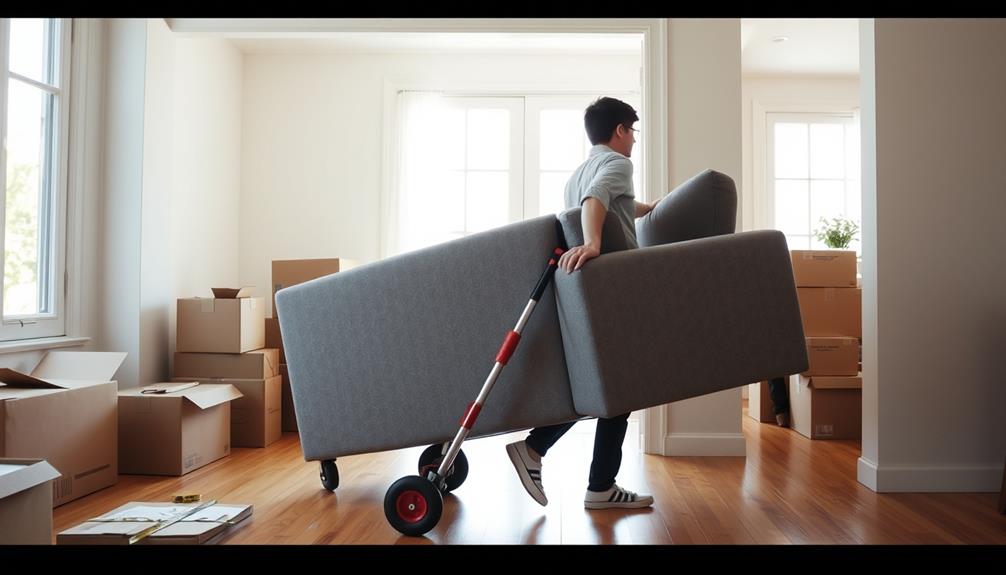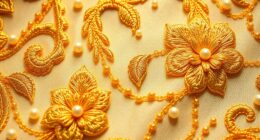To clean wood furniture with vinegar, start by mixing equal parts white vinegar and water in a spray bottle. Lightly spray the solution onto a microfiber cloth—never directly on the furniture. Wipe the surface in the direction of the grain using circular motions. If you've got stubborn stains, soak a cloth in vinegar and gently rub the area. After cleaning, buff with a dry cloth to enhance shine. Remember to check compatibility on a hidden spot first, as vinegar can affect certain finishes. There's plenty more to discover on keeping your wood furniture looking its best.
Key Takeaways
- Mix equal parts of white vinegar and filtered water in a spray bottle for a safe cleaning solution.
- Lightly spray the solution onto a microfiber cloth, avoiding direct application on the wood.
- Wipe the wood surface in the direction of the grain using circular motions to prevent damage.
- Ensure the cloth is damp, not soaking wet, to avoid saturating the wood.
- Buff the surface with a dry cloth after cleaning to enhance shine and maintain luster.
Materials Needed
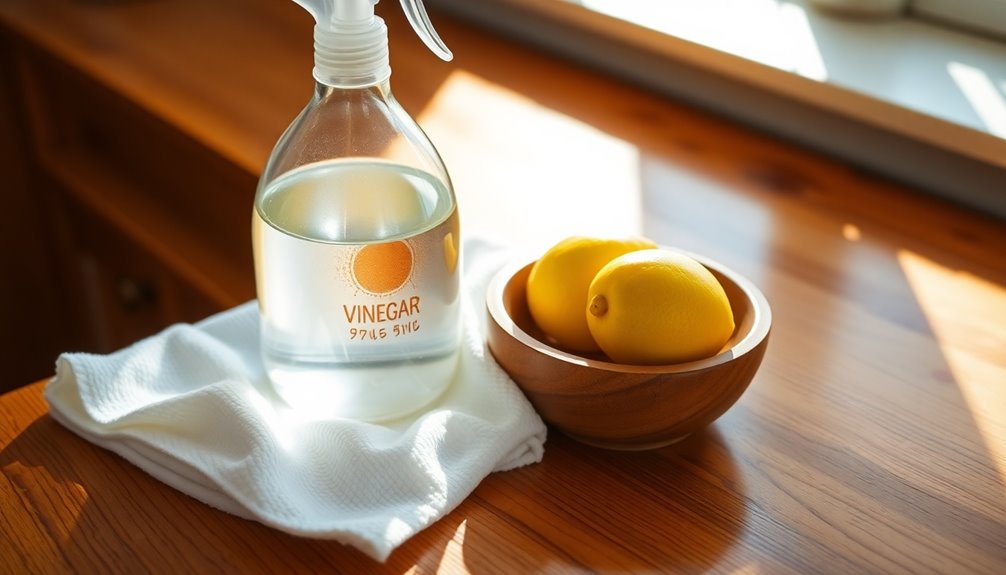
To effectively clean your wood furniture, you’ll need a few essential materials. Start with white vinegar, which serves as a powerful natural cleaner. You’ll also need water to dilute the vinegar, ensuring it’s safe for your wood surfaces. For conditioning and polishing, grab some olive oil; it’s great for keeping your furniture looking fresh and shiny. Once you have your materials ready, mix equal parts of white vinegar and water in a spray bottle for an effective cleaning solution. Lightly spritz the mixture onto a soft cloth and gently wipe down your wood furniture, removing any dust and grime. To learn how to maintain wooden surfaces, consider applying olive oil after cleaning to nourish the wood and enhance its natural luster, making your furniture look as good as new.
Microfiber cloths are a must-have for cleaning and buffing your surfaces without scratching them. You can use a spray bottle or a bowl to mix your cleaning solution, making application easy and efficient. Additionally, have some soft, lint-free cloths on hand for dusting and cleaning.
A vacuum cleaner will help you remove dust and debris from your furniture before you start cleaning. Regular maintenance with a duster can keep your surfaces looking great in between deep cleanings. Lastly, consider using a dry cloth to buff out any excess moisture after cleaning. If you like a pleasant scent, you can add essential oil to your vinegar solution, but that's entirely optional. With these materials ready, you'll be well-equipped to tackle your wood furniture cleaning!
For added effectiveness, using non-toxic ingredients in your cleaning solution helps ensure safety for both your family and the environment.
Preparation and Testing
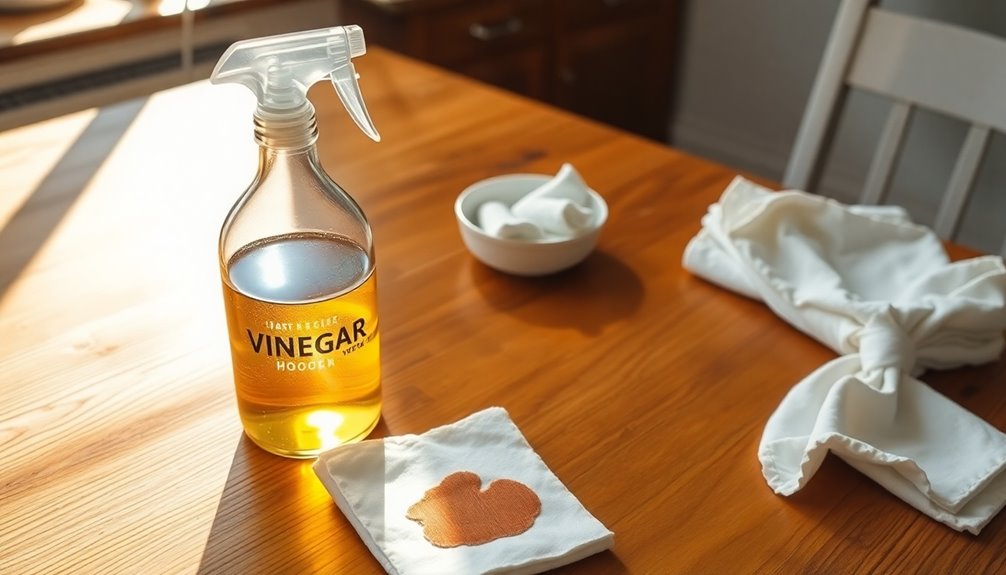
With your materials gathered, it's time to prepare your cleaning solution and ensure it's safe for your wood furniture. Mix equal parts of white vinegar and filtered water for an effective cleaner. If you want to condition the wood while cleaning, combine vinegar with olive oil instead. Just remember, undiluted vinegar can be too harsh, so always dilute it properly. A diluted solution is strong enough for cleaning ensures that you effectively cut through grease and grime without damaging the wood.
Before you dive into cleaning, testing the solution on a hidden area of your furniture is crucial. Choose an inconspicuous spot, like the underside of a table. Apply your vinegar mixture and let it sit for a few minutes. Check for any discoloration or damage, observing the area carefully for adverse reactions. This step ensures your solution won't harm the wood's finish.
Don't forget to remove dust and debris from the surface first. Use a dry microfiber cloth to wipe down the furniture, including hidden crevices. This helps prevent scratches during the cleaning process. Lastly, be cautious with different types of wood; avoid using vinegar on unsealed, unfinished, or waxed pieces, as they require specialized cleaners to maintain their integrity.
Cleaning Process
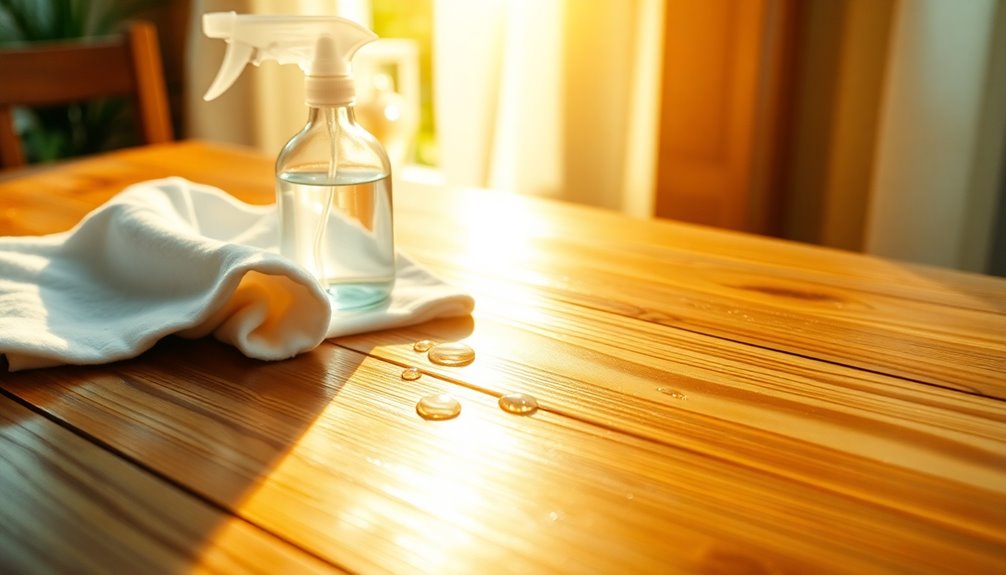
Cleaning wood furniture effectively requires a careful approach to ensure you maintain its beauty and integrity. Start by mixing equal parts of white vinegar and water in a bowl. If you want a conditioning effect, mix equal parts of vinegar and olive oil instead. For an alternative ratio, use three tablespoons of vinegar per cup of filtered water. Avoid using undiluted vinegar, as it can damage the wood finish. Regular cleaning helps prolong the lifespan of your wood furniture.
Dampen a soft, clean cloth with your chosen solution, making sure it's not too wet. Apply the solution to the cloth or directly onto the furniture surface. Use circular motions to gently rub the solution into the wood, always following the grain. Be cautious not to saturate the wood, as excess moisture could lead to warping.
Before applying the cleaning solution, dust the furniture to remove any surface dirt. After cleaning, wipe the furniture down with a dry cloth to eliminate any leftover moisture. The olive oil will help restore the wood's natural shine. For a final touch, buff the wood with a clean, dry cloth. Regular cleaning with this method will help maintain the wood's longevity and luster.
Removing Water Rings and Stains

Water rings and stains on wood furniture can be frustrating, but several effective methods can help you restore its appearance. One simple way is to soak a clean cloth in white vinegar, wring it out, and rub the stained area gently until the stain lifts. If that doesn't work, pour vinegar onto a cloth, press it against the stain, and leave it for at least half an hour. Rinse the area with clean water and buff it dry.
For newer stains, you can use heat. Place a cotton cloth over the stain and apply a household iron on the lowest setting or use a hairdryer on high. This method helps draw moisture out of the finish, which is particularly effective for fresh stains.
If you prefer a combination, mix equal parts of white vinegar and olive oil. Apply this mixture to the stain with a clean cloth, wiping in the direction of the grain. The vinegar lifts the stain while the olive oil polishes the surface.
For stubborn stains, try a paste of mayonnaise and vinegar or a mixture of toothpaste and baking soda, rubbing gently in a circular motion.
Polishing With Vinegar and Oil
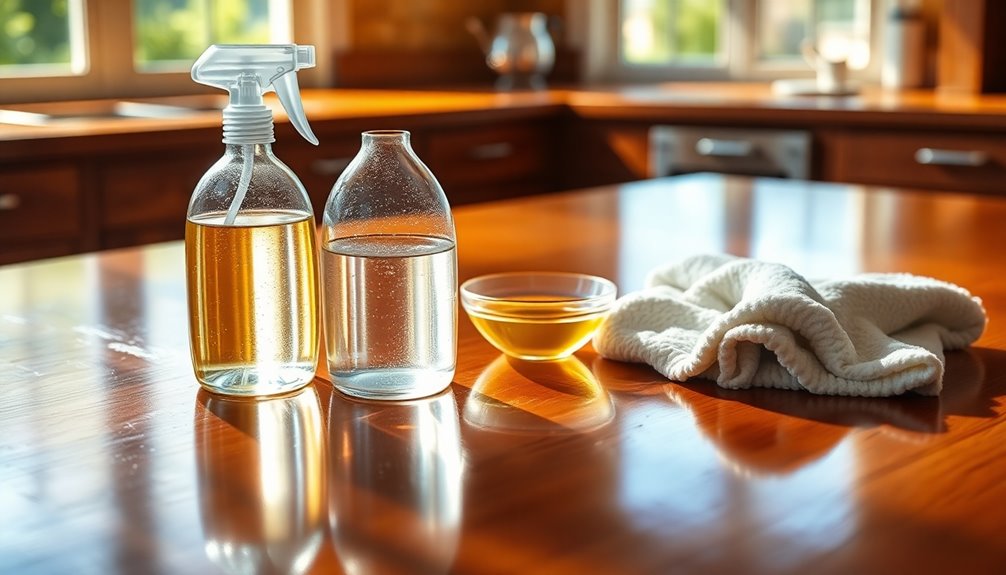
After tackling those pesky water rings and stains, it's time to enhance the overall appearance of your wood furniture with a polishing solution. Start by mixing your solution: combine 2 parts olive oil with 1 part vinegar for a basic blend, or try equal parts for a simpler version. If you want a different ratio, mix ¾ cup olive oil with ¼ cup vinegar. For a fresh scent, add a few drops of essential oil or a small amount of scented dish soap.
Before applying the solution, clean your furniture with a dusting brush or a damp cloth. Make sure the surface is free of dust and debris, and test the solution on an inconspicuous spot to avoid damage. Use a soft, lint-free cloth to prevent scratches. Dip your cloth in the solution and rub it across the wood, following the grain for even coverage. For stubborn spots, apply a bit more pressure. Additionally, this mixture can help restore shine to wooden furniture that may have lost its luster over time.
After applying the solution, buff the surface with a clean, dry cloth in circular motions. Let the polished area dry for several hours, and repeat this process monthly to maintain that beautiful shine.
Potential Risks and Precautions

Using vinegar on wood furniture can present several risks that you should be aware of before applying any cleaning solution. First, vinegar's high acidity can disrupt the natural pH balance of the wood, stripping away essential oils. This can leave the surface dry and dull, and repeated use might weaken the wood's structure over time. Additionally, vinegar can damage protective finishes like varnish or lacquer. Stripping these finishes exposes raw wood to potential decay and moisture damage, compromising both its durability and aesthetic appeal. If your furniture is unsealed or waxed, using vinegar can cause swelling, cracking, or loss of luster, as it dissolves wax and oils. Moreover, vinegar can alter the wood's color and finish, leading to discoloration and increased vulnerability to scratches. Proper care is essential to maintain the integrity of your wood furniture and prevent these risks. Continuous exposure may cause physical changes like swelling or warping, resulting in long-term damage. To mitigate these risks, always test a small, inconspicuous area first, and consider using gentler cleaning alternatives specifically designed for wood furniture.
Frequently Asked Questions
Can I Use Vinegar on Painted or Stained Wood Furniture?
Yes, you can use vinegar on both painted and stained wood furniture, but you need to be careful. Always dilute the vinegar to protect the finish. Mix it with water and a bit of mild dish soap for a gentle solution. Test it on a hidden spot first. Avoid using full-strength vinegar and abrasive tools to prevent damage. Regular dusting and occasional polishing will help maintain your furniture's appearance.
How Often Should I Clean My Wood Furniture With Vinegar?
You should clean your wood furniture regularly, depending on its usage and environment. For high-traffic areas, aim for every 1-2 months. If you use it less often, every 3-6 months should suffice. Regular dusting can minimize the need for deep cleaning. Always adjust your schedule based on visible dirt or grime. By maintaining a consistent routine, you'll keep your furniture looking great and extend its lifespan.
What Should I Do if Vinegar Causes Discoloration?
If you notice discoloration after using vinegar, stop immediately. Gently buff the area with a clean, dry cloth to remove any excess solution. You might want to apply a wood-specific cleaner or polish to help restore the original finish. For minor scratches or chips, consider using a colored filler stick. If the damage is severe, it's best to consult a professional furniture restorer to assess and fix the issue.
Is There an Alternative Cleaner to Vinegar for Wood Furniture?
Absolutely, there are several great alternatives to vinegar for cleaning wood furniture. You can mix lemon juice with olive oil for a natural cleaner that removes stains. Another option is Vermont Natural Coatings Wood Cleaner, which is non-toxic and safe for all surfaces. ECOS Furniture Cleaner + Polish is also effective, using olive oil and citrus without harsh chemicals. Just remember to test any cleaner on an inconspicuous area first to avoid damage.
Can I Use Vinegar on Antique Wood Furniture?
You can use vinegar on antique wood furniture, but you need to be cautious. Always test a small, hidden area first to see how the finish reacts. If there's no discoloration or damage, you can proceed. Remember to dilute the vinegar with water to create a mild solution, and avoid saturating the cloth. Gentle cleaning is key to preserving the integrity of your antique piece while keeping it looking its best.
Conclusion
Cleaning your wood furniture with vinegar can be an effective and natural way to keep it looking great. By following the steps outlined, you'll not only remove dirt and stains but also maintain its shine. Just remember to test the vinegar on a small area first and take precautions to avoid damage. With a little care, your wood pieces will stay beautiful and last longer. Enjoy your fresh, clean furniture!
